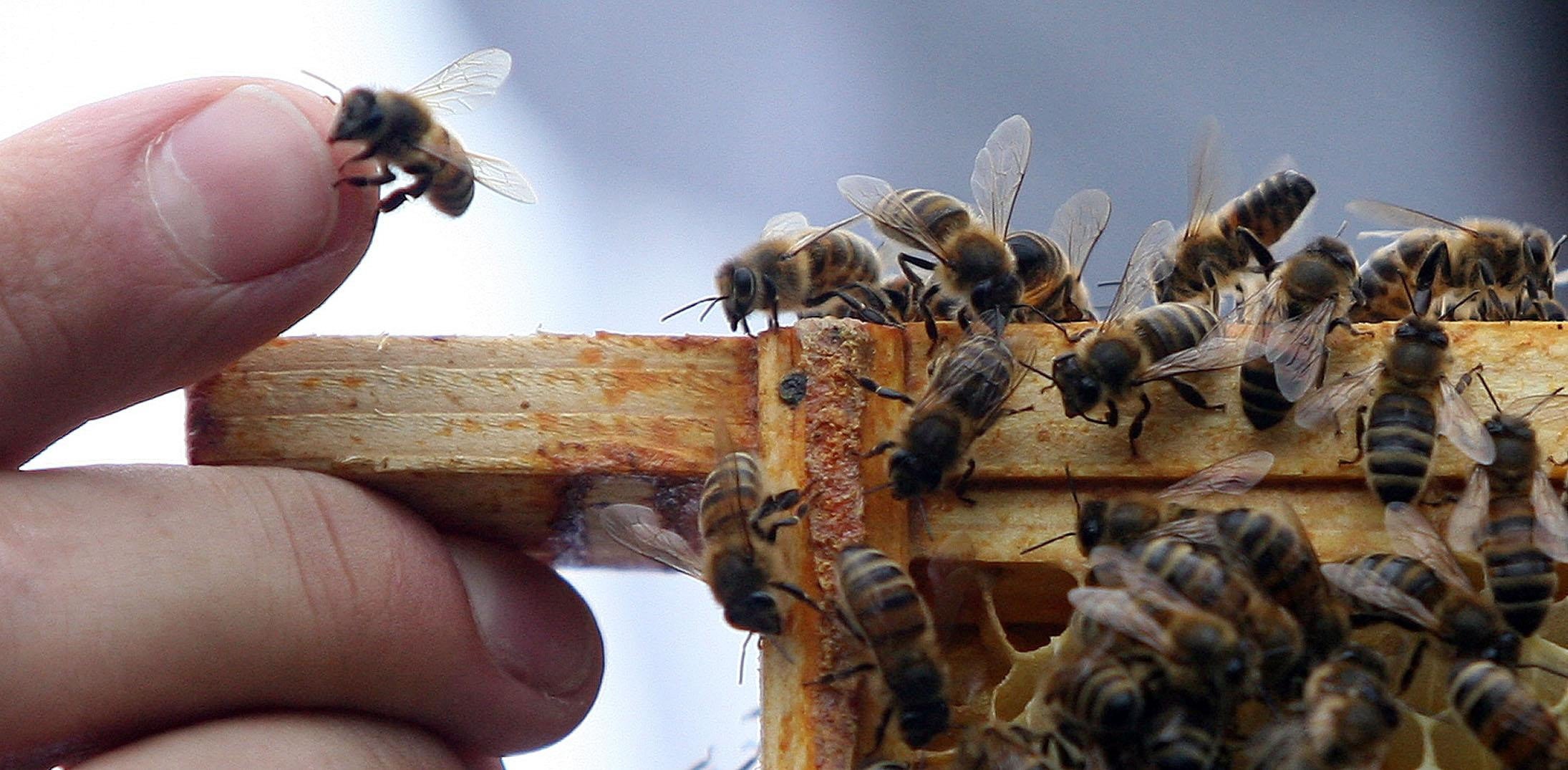Parasitic honeybee mite uses vibrations to sense where it is in the hive – study
Researchers hope the discovery could lead to understanding how to manage and potentially eradicate Varroa destructor mite infestations.

Your support helps us to tell the story
From reproductive rights to climate change to Big Tech, The Independent is on the ground when the story is developing. Whether it's investigating the financials of Elon Musk's pro-Trump PAC or producing our latest documentary, 'The A Word', which shines a light on the American women fighting for reproductive rights, we know how important it is to parse out the facts from the messaging.
At such a critical moment in US history, we need reporters on the ground. Your donation allows us to keep sending journalists to speak to both sides of the story.
The Independent is trusted by Americans across the entire political spectrum. And unlike many other quality news outlets, we choose not to lock Americans out of our reporting and analysis with paywalls. We believe quality journalism should be available to everyone, paid for by those who can afford it.
Your support makes all the difference.Tiny parasitic mites that are a threat to the honeybee frequently send strong vibrational pulses into the surface they live on, a new study has found.
Scientists argue the vibration could be produced for the purpose of environmental probing, with the mite exploiting the material’s response to the signal in order to examine its surroundings.
They hope the discovery could lead to understanding how to manage and potentially eradicate Varroa destructor mite infestations in the hive.
Using ultra-sensitive tools, scientists at Nottingham Trent University recorded the repeated knocking of the 1mm creatures, which they do by abruptly jolting their bodies.
According to the researchers, they are the first group in the world to capture such vibrational waveform from a mite of any species, which can also be heard as an audio track.
The mites – which cannot see or hear and weigh about half a milligram – live in honeybee colonies and feed on adult bees and larvae.
They pass on a variety of viruses to their hosts and play an important role in the destruction of colonies, scientists say.
We have characterised a new behaviour in this species, a discovery so fundamental that it could have numerous and unexpected repercussions
The vibration that is caused by the mite’s jolting is very short and rapidly produced – taking just 50 to 90 microseconds for the vibration to be transmitted.
Harriet Hall, a researcher at the university’s School of Science and Technology, said: “If a mite becomes dislodged from its honeybee host, this could perhaps help it orientate back to a bee, especially as the animal can’t see or hear.
“The mite jolting is a commonly observed behaviour that is energetically demanding to produce – another sign that the mite produces this vibration deliberately, for its own benefit.”
Dr Martin Bencsik, a physicist at the university, added: “The vibrational pulse coincides with a mite’s abrupt body motion, which has never been seen before and which we have captured and showcased in our work.
“We have characterised a new behaviour in this species, a discovery so fundamental that it could have numerous and unexpected repercussions.”
The researchers are now launching a new branch of investigations to help further clarify the purpose of the vibrations.
It is hoped that deeper understanding of the function will allow them to manipulate the behaviour to better manage and potentially eradicate the mite from honeybee hives.
The study is published in the journal Entomologia Generalis, and also involved the University of Warwick.